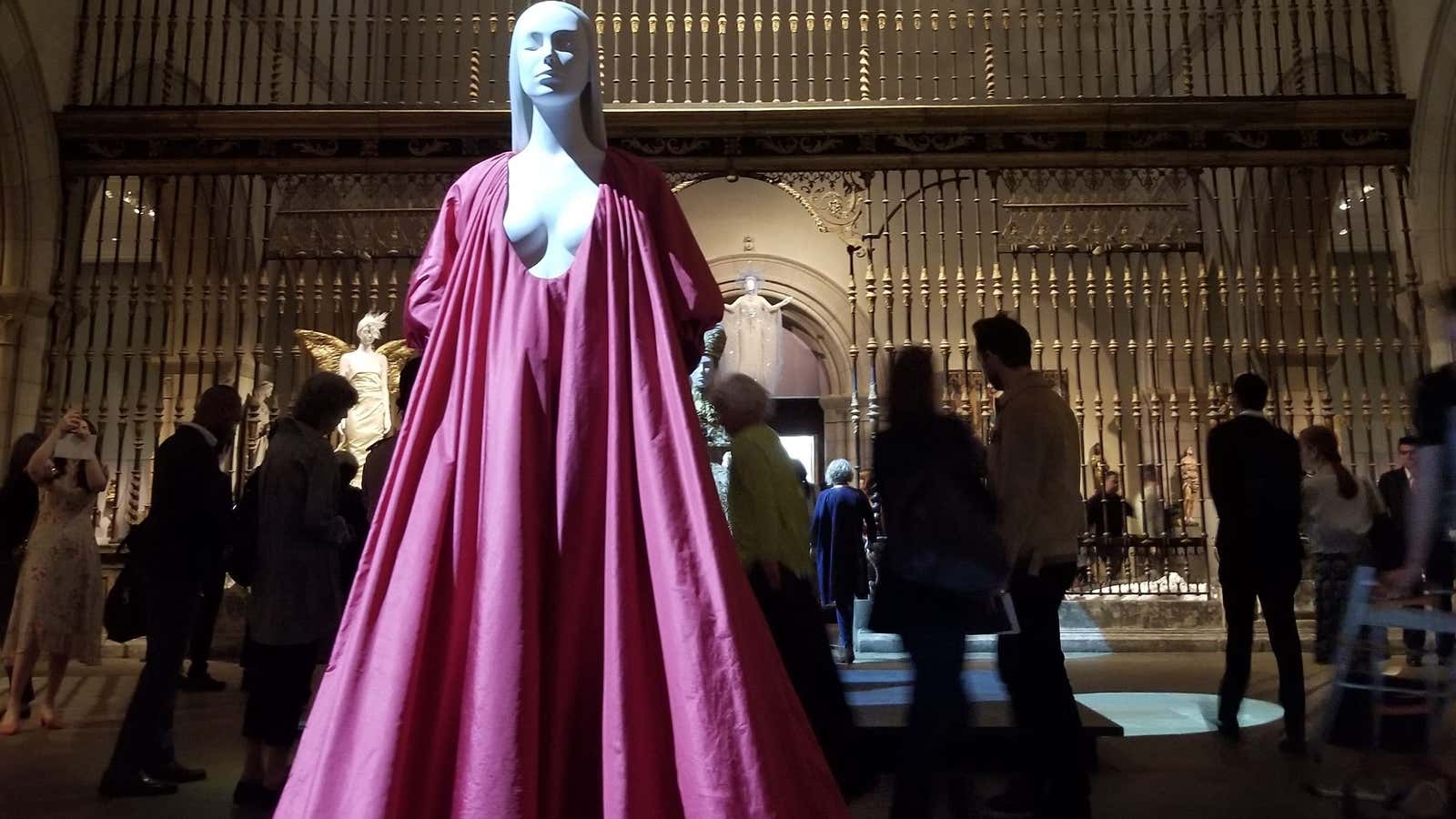What does Catholicism have in common with fashion? For one thing, a fixation on bodies.
Think of the Eucharist, the ritual of taking in the body and blood of Christ in the form of bread and wine. Or the image of Jesus on the cross, his broken body the metaphor of his sacrifice. Or the Virgin Mary, her holiness marked by her inviolate body.
Fashion, meanwhile, you could say is the meeting of body and fabric.
These ideas come together in an ambitious new exhibit in New York City, “Heavenly Bodies: Fashion and the Catholic Imagination,” opening May 10 at the Metropolitan Museum of Art. “To me what is central to Catholicism and fashion is the idea of the body,” says Andrew Bolton, head curator at the Met’s Costume Institute. “There’s an inherent carnality to Catholicism, as there is with fashion.”
It’s the largest exhibit ever staged by the Met and the Costume Institute, spanning 25 galleries and some 60,000 square feet. To see it all, you not only have to visit the Met, you also need to head up to the Cloisters, the museum’s reconstruction of French monasteries located on the northern end of Manhattan.
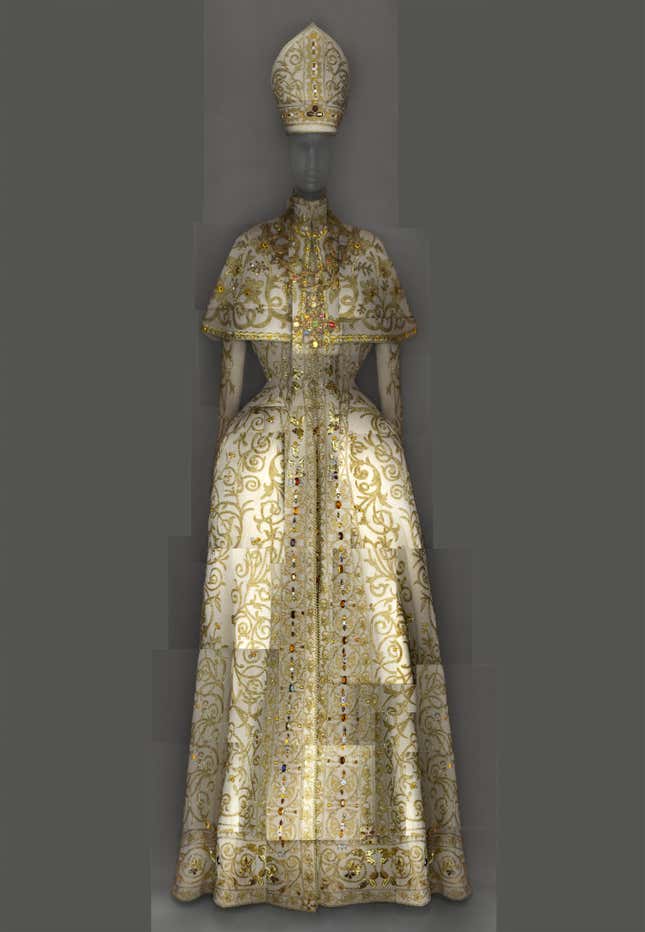
The exhibit is filled with gorgeously opulent clothes—and that goes for the exquisitely cut gowns from the likes of designers such as Balenciaga, Versace, and Saint Laurent as well as the numerous papal vestments that Bolton and his supporters, including Vogue editor Anna Wintour, worked for years to coax the Vatican into loaning them (paywall). There are ecclesiastical pieces so carefully and elaborately decorated that they would rival the work of any Parisian couture house, such as the elaborate mantles from around 1800 worn by Pope Pius VII in a procession of Corpus Christi—a celebration of Christ’s body and blood.
The most eye-catching pieces, like radiant gowns of the sort that celebrities such as Rihanna wore to the Met Gala to celebrate the opening of “Heavenly Bodies,” reflect the prevailing image of church garments as lavish and ornate—an at-times controversial image for an organization based on the teachings of a penniless laborer who advocated for the downtrodden. But it was very deliberately devised by the church centuries ago.
In the 8th and 9th centuries, church officials began to seriously consider what the clergy should and shouldn’t wear. Prior to that, when Christianity first became legal in the Roman Empire, they wore clothing similar to secular Roman dress. But the church started to feel that its representatives should look different than the masses, particularly when celebrating mass. What they wore on their bodies was an obvious opportunity to set them apart.
That’s when “the ornate style,” as clerical-clothing historian Maureen C. Miller has described it, began to emerge. “Priests start to wear really elaborate and beautiful vestments made of fine materials,” says Valerie Garver, a historian at Northern Illinois University who is working on a study of clothing during that period of medieval European history. “They’re going to look, to some degree, more like what we would see now if we walked into a Catholic church. They’re going to use silk and embroidery and gold.”
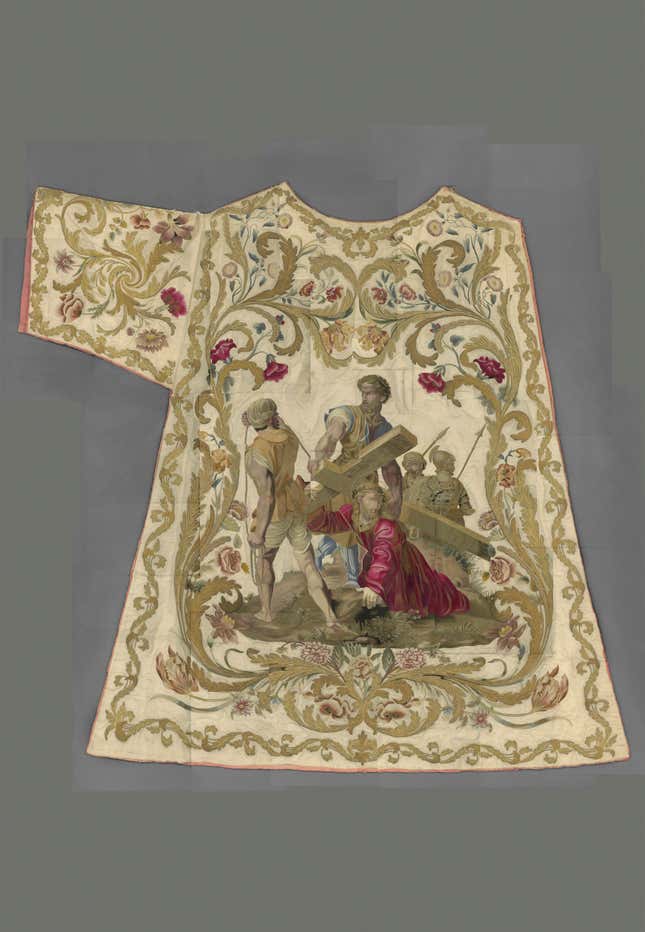
These garments designated the church as a sacred space reflecting God’s glory. But by the 12th century, Miller’s research shows, priests’ clothing was largely about their own holiness. “It’s this idea that they’re showing off a kind of holy power that they have because of their clerical status,” Garver explains. It made for some beautiful garments.
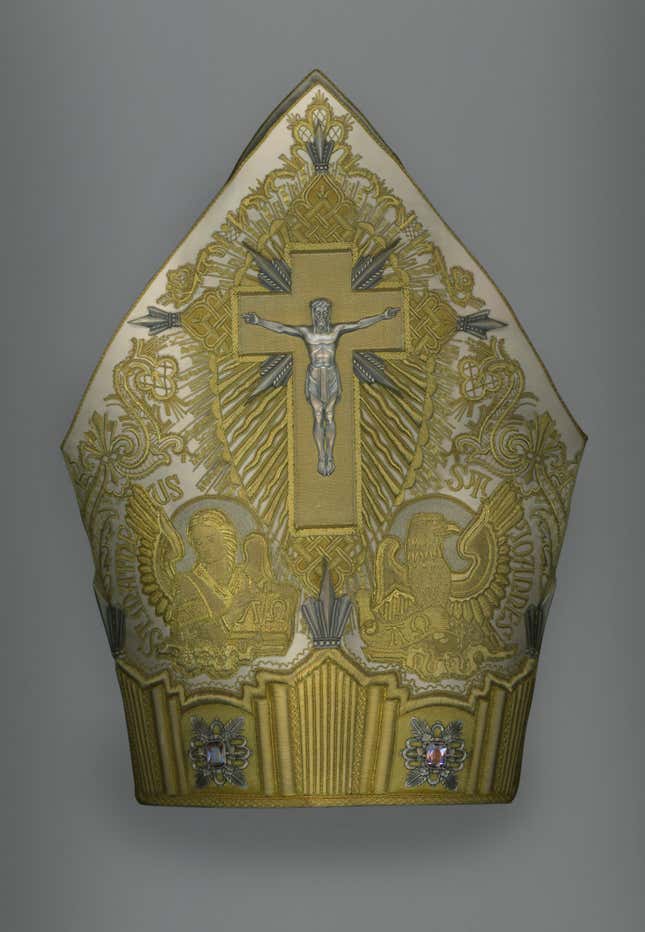
Beauty is another preoccupation of both Catholicism and fashion. At a May 7 press preview, the archbishop of New York, Cardinal Timothy Dolan, explained the church’s involvement in the Met’s exhibit. “The church and the Catholic imagination are all about three things: truth, goodness, and beauty,” he said. He added that the “beauty of God is reflected all over the place, even in fashion.”
Bolton suggests a similar idea about creativity in the exhibit. Among the wall texts scattered throughout, he includes a quote from the book The Catholic Imagination by Andrew Greeley. ”Catholics live in an enchanted world, a world of statues and holy water, stained glass and votive candles, saints and religious medals, rosary beads and holy pictures,” it reads. ”But these Catholic paraphernalia are mere hints of a deeper and more pervasive religious sensibility that inclines Catholics to see the Holy lurking in creation.”
The clergy’s glorious clothing was generally restricted to within the church’s walls though. By the late middle ages and early modern period, Garver says, priests were expected to wear dark, plain clothing when in public. This more modest look became a symbol of virtue, and it’s impact on fashion appears at the Met as well, in pieces such as a somber frock coat by Raf Simons and several dresses—headpieces, too—that take their inspiration from nuns.
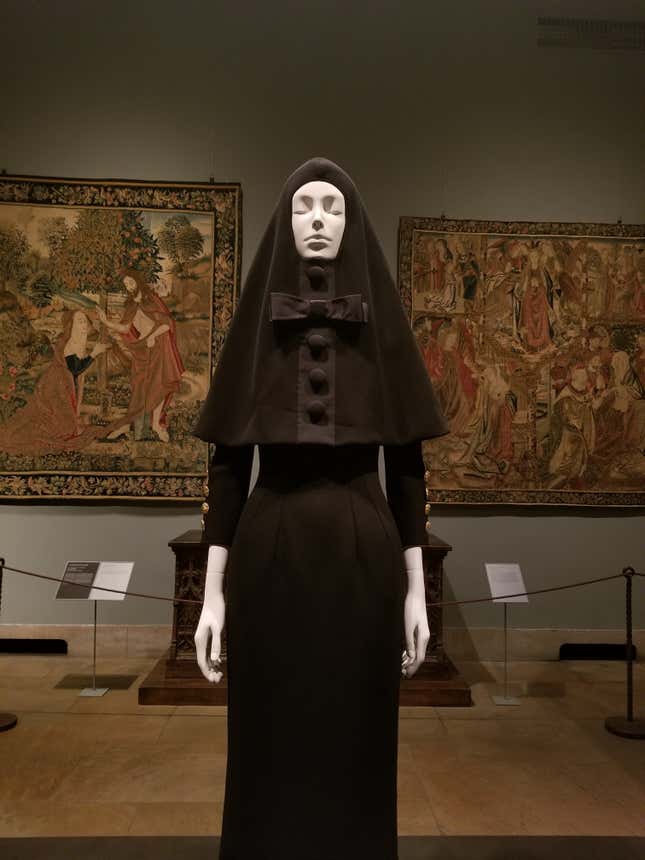
Maybe the most obvious difference between the clerical garments and the high-fashion ones is their approach to sex, another body-centric concern that the church and the fashion world hold in common. Designers in the exhibit played upon the theme of sexuality—hiding and exposing it—with garments both modest and decidedly less so. One red Valentino dress, for example, is cut with a yawning neckline that would show more skin than most churches would find acceptable.
Many of the designers included in the exhibit actually grew up Catholic. Balenciaga even considered becoming a priest. Bolton had originally envisioned the show being about the influence of five major religions, though he quickly realized that the Catholic material overwhelmed the others. In that sense, it reflects the Euro-centrism of the fashion industry—even though Catholicism is increasingly non-European these days.
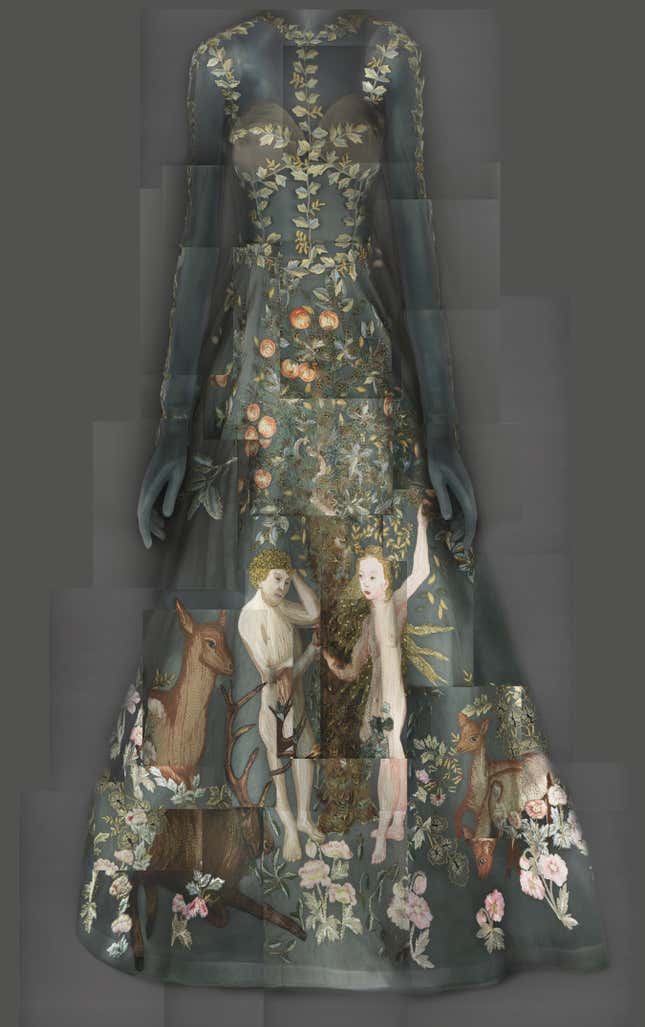
Throughout the items there is a clear bent toward metaphor, and a sense of mysticism. The gold, the drapery, and the climbing headpieces can feel otherworldly, and detached from earthly concerns. The Pope’s red shoes and that red Valentino dress both gesture toward the notion of Christ’s blood. The body is always being transformed.
